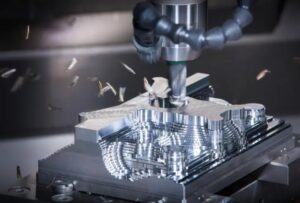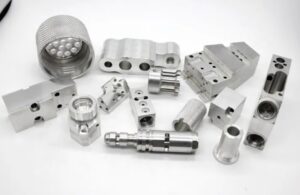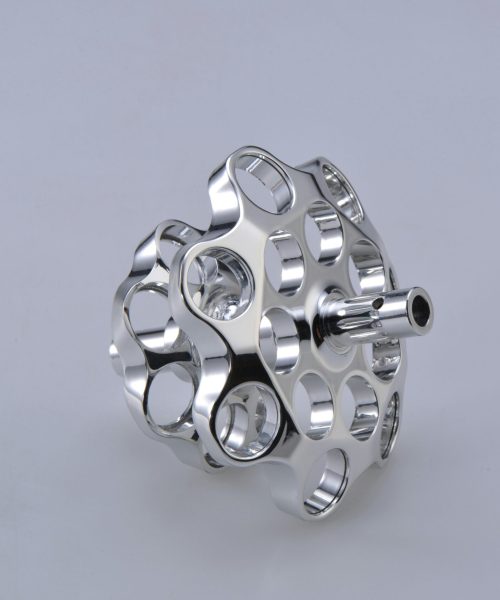Brass is one of the most widely used materials in CNC machining, prized for its excellent machinability, durability, and aesthetic appeal. Whether you’re creating intricate parts for plumbing, electrical components, or decorative items, brass CNC machining offers the precision and reliability you need to produce high-quality components with ease.
In this guide, we’ll dive deep into brass CNC machining, exploring everything from its process, benefits, and applications to tips for getting the best results. Let’s make CNC machining with brass a breeze!
What is Brass CNC Machining?
Brass CNC machining involves using computer-controlled machines to shape brass into precise parts. Brass is a copper-zinc alloy that offers excellent machinability, which makes it a favorite material in CNC machining. The process uses pre-programmed software to control the movement of cutting tools, ensuring accuracy, speed, and repeatability.
Brass is a fantastic material for CNC machining because it’s both easy to work with and offers superior mechanical properties. It’s known for its low friction, corrosion resistance, and attractive gold-like appearance. Whether you’re making small connectors or complex fittings, brass delivers excellent results.
How Does the Brass CNC Machining Process Work?
The process of brass CNC machining can seem complex, but it’s actually quite straightforward once you break it down. Here’s a simplified look at the typical steps involved:
1. Tasarım Aşaması
Everything starts with a design. Using CAD (Computer-Aided Design) software, you’ll create a 3D model of the part you want to machine. This digital blueprint contains all the necessary details, from dimensions to tolerances, which will guide the CNC machine during the manufacturing process.
2. Programming the CNC Machine
Once the design is finalized, the next step is to convert it into instructions that the CNC machine can understand. This is done using CAM (Computer-Aided Manufacturing) software, which translates the design into G-code, the language that controls the CNC machine.
3. Setup and Material Selection
Brass stock material (typically rods, bars, or plates) is loaded into the CNC machine. The machine is then calibrated and adjusted to ensure that the cutting tools are positioned correctly and ready to follow the programmed instructions.
4. Machining Process
As the CNC machine starts, it will move its cutting tools along multiple axes to carve, drill, or shape the brass into the desired form. The entire process is automated, allowing for high precision and consistency, even with complex designs.
5. Post-Machining and Finishing
After the machining is complete, the brass part might undergo additional finishing processes such as deburring, polishing, or coating to achieve the desired surface finish and appearance.


Why Choose Brass for CNC Machining?
Brass is a superstar when it comes to CNC işleme, and it’s not hard to see why. Here are some reasons why you might choose brass for your next machining project:
1. Excellent Machinability
Brass is one of the easiest materials to machine. It cuts cleanly and quickly, which helps reduce production times and tool wear. This translates to lower costs and higher efficiency.
2. Korozyon Direnci
Brass naturally resists corrosion, particularly from water and certain acids, making it ideal for plumbing fixtures, marine applications, and other environments where moisture is present.
3. Attractive Finish
With its warm, gold-like hue, brass offers an attractive appearance straight out of the machining process. It’s often used in applications where aesthetics matter, such as in decorative hardware or luxury items.
4. Low Friction
Brass has a low coefficient of friction, making it perfect for components that will be in contact with other parts, such as gears, bearings, and connectors.
5. Electrical Conductivity
Brass is an excellent conductor of electricity, which is why it’s commonly used in electrical connectors and terminals.
Types of Brass Used in CNC Machining
Not all brass is created equal. Different grades of brass offer varying properties, making them suitable for different applications. Let’s take a look at some of the most common types of brass used in CNC machining:
1. C360 (Free-Cutting Brass)
C360 brass, often called free-cutting brass, is the most machinable of all brass alloys. It’s commonly used for precision parts such as fasteners, fittings, and valve components. C360 brass is highly preferred for CNC machining because it produces clean cuts and maintains tight tolerances.
2. C385 (Architectural Brass)
C385 brass, also known as architectural brass, is often used in decorative applications due to its bright, golden appearance. While it’s slightly less machinable than C360, it’s still an excellent choice for parts that require both aesthetic and structural qualities.
3. C464 (Naval Brass)
C464, or naval brass, is known for its high corrosion resistance, especially in marine environments. It’s commonly used in shipbuilding, propellers, and marine hardware.
4. C220 (Commercial Bronze)
Though technically a bronze, C220 brass has excellent corrosion resistance and is often used in the construction of electrical components, architectural elements, and musical instruments.


Applications of Brass CNC Machining
Brass is a versatile material that can be found in countless industries, thanks to its unique combination of properties. Here are just a few examples of where brass CNC machining shines:
1. Plumbing and HVAC
Brass fittings, valves, and connectors are widely used in plumbing and HVAC systems due to their corrosion resistance and durability in wet environments.
2. Electrical Components
Because of its excellent electrical conductivity, brass is a top choice for electrical connectors, terminals, and other conductive parts used in electronics.
3. Automotive Parts
Brass is often used in the automotive industry for components such as fuel connectors, bushings, and radiator cores, thanks to its ability to withstand high temperatures and corrosive conditions.
4. Decorative Hardware
Brass offers an attractive finish, making it ideal for decorative hardware such as door handles, knobs, and light fixtures. Its rich color and polishable surface make it a favorite for luxury items.
5. Musical Instruments
Brass is a key material in the manufacture of musical instruments like trumpets, saxophones, and trombones, offering both aesthetic appeal and sound quality.


Tips for Optimizing Brass CNC Machining
Want to get the best results with brass CNC machining? Here are some expert tips to keep in mind:
1. Use Sharp Cutting Tools
Since brass is a relatively soft metal, using sharp cutting tools ensures clean cuts and minimizes the risk of burrs or surface imperfections.
2. Optimize Cutting Speeds
Brass can be machined at high speeds, so take advantage of this to improve efficiency. However, make sure to avoid excessive heat buildup, which can lead to tool wear or damage.
3. Deburr for a Smooth Finish
While brass typically machines cleanly, minor burrs may still form, especially with complex parts. Deburring helps ensure a smooth finish and improves the overall quality of the final product.
4. Minimize Tool Changes
To speed up production, try to reduce the number of tool changes by using versatile cutting tools that can handle multiple operations. This helps improve efficiency and lowers downtime.
5. Consider Surface Treatments
Although brass naturally has an attractive appearance, applying additional surface treatments like polishing or coating can enhance its durability and aesthetic appeal.
Sonuç
Brass CNC machining offers a perfect combination of precision, efficiency, and versatility. Whether you’re working on complex electrical connectors, durable plumbing fittings, or elegant decorative hardware, brass is an excellent material choice that delivers high-quality results every time.
At GCH PROCESS, we understand the unique challenges and opportunities that come with brass CNC machining. Our advanced CNC services are tailored to meet your specific requirements, ensuring every part is machined to perfection. Need help with your brass machining project? Contact us today for an instant quote and let’s bring your vision to life!


SSS
Why is brass a good material for CNC machining?
Brass offers excellent machinability, corrosion resistance, and low friction, making it an ideal material for high-precision parts in industries like plumbing, automotive, and electronics.
Can brass be polished after CNC machining?
Yes! Brass takes well to polishing, and a polished brass part can have a stunning, mirror-like finish. Polishing is often done to enhance the aesthetic of decorative hardware or luxury products.
What types of brass are best for CNC machining?
C360 (free-cutting brass) is the most common brass alloy used in CNC machining due to its ease of machining and ability to maintain tight tolerances. Other alloys like C464 (naval brass) or C385 (architectural brass) are also used for specific applications.
What is the typical tolerance in brass CNC machining?
Brass CNC machining can achieve tight tolerances, typically around ±0.005 inches or better, depending on the complexity and size of the part.
Is brass more expensive than other metals for CNC machining?
Brass is generally more expensive than common materials like aluminum, but its machinability and performance benefits can make it more cost-effective for specific applications.
Popularization of CNC machining methods:https://en.wikipedia.org/wiki/Multiaxis_machining






